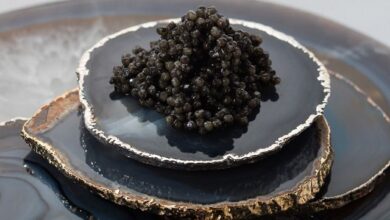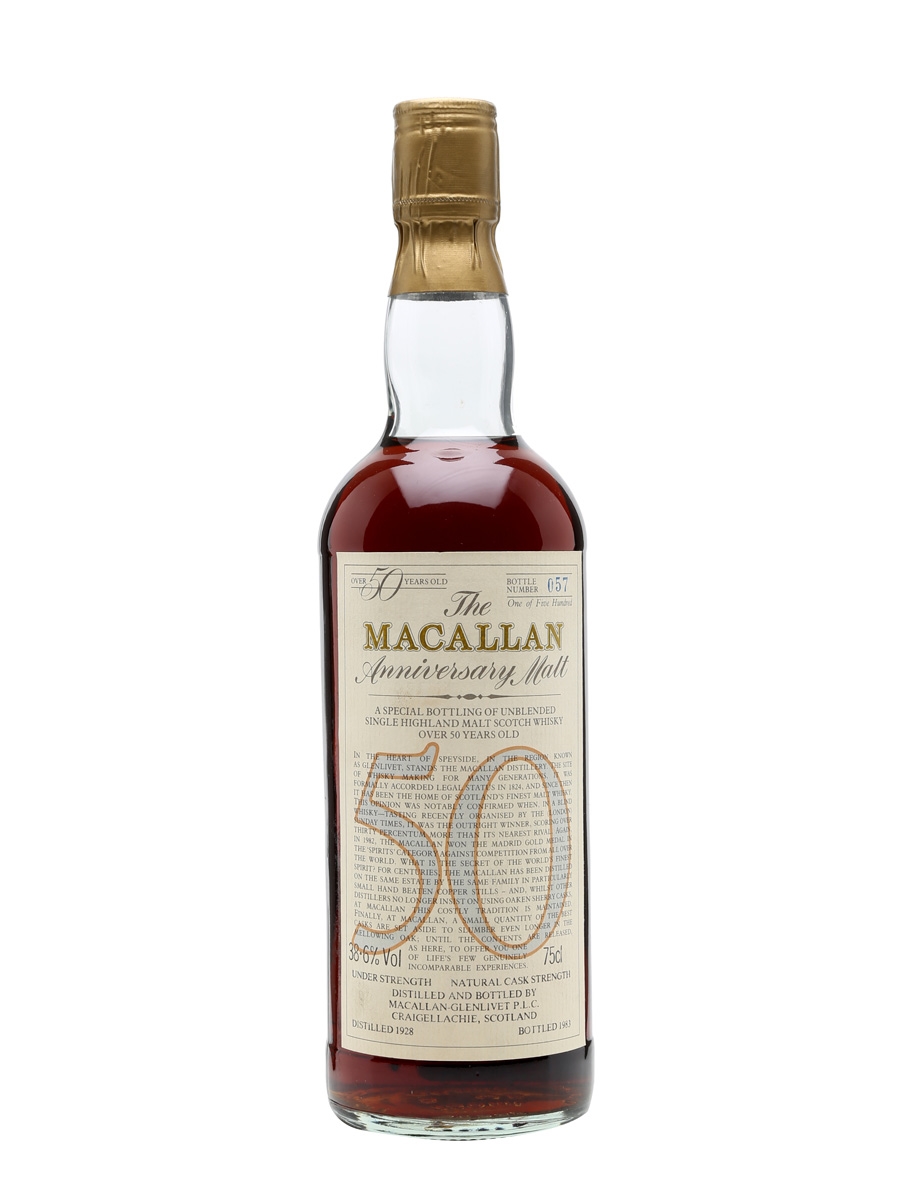Whisky: History, Types, Which One To Choose

Whiskey is a strong flavored alcoholic beverage made from various types of grain using the processes of malting, fermentation, distillation and long aging in oak casks. Barley, rye, wheat or maize may be used in the making of whisky. The strength ranges from 32 to 50 per cent, but some whiskies go as high as 60 per cent. The color of the drink varies from light yellow to brown. The sugar content is zero or extremely low. The traditional whisky producing regions are Scotland and Ireland.
History of Whisky
History of Whisky The earliest attempts at distillation were made by the Greeks in Alexandria in the 1st century AD, but this was not done for the purpose of obtaining alcohol. In the 9th century, medieval Arabs adopted the distillation method of the Alexandrian Greeks. The distillation method then passed from the medieval Arabs to the medieval Latins. The earliest references in Latin date back to the early 12th century. The first records of alcohol distillation appear in Italy in the 13th century; the method was described by Ramon Lull (1232 – 1315).
Distillation technology soon spread to medieval monasteries, where it was used mainly for medical purposes, such as treating colic and smallpox.
In Ireland and Scotland, distillation technology appeared no later than the 15th century, where it was used mainly for medicinal purposes as well. The earliest mention of whisky in Ireland is recorded in a seventeenth-century book, Annals of Clonmacnoise. In Scotland, the first evidence of whisky production is found in an entry in the Exchequer Rolls for 1494, where malt is sent ‘by order of the King to Friar John Corr to make aquavits’, in quantities sufficient to make about 500 bottles. In 1505, the Guild of Surgeons and Barbers of Edinburgh was granted the monopoly of whisky production. Whisky began to be sold in apothecaries as a miracle drug.
Between 1536 and 1541, King Henry VIII of England dissolved the monasteries, sending the monks away. During this key period, whisky production moved from monastic settings to personal homes and farms, as the newly independent monks needed to find a way to make money for themselves. In 1579, the Scottish Parliament banned the production of whisky to peasants and people of ignorant backgrounds. However, this led to the development of ‘underground’ small distilleries.
Over time, the methodology of whisky production has changed somewhat. Distillation and purification techniques improved, and some changes were made in terms of casks: most whiskies are aged in bourbon (American whisky) casks, and only some varieties are aged in sherry, port, rum or other casks.

(Credit: Richard Thomas)
The reason for this was economic expediency: according to production standards, bourbon should be aged only in new casks. Accordingly, the price of used barrels is very low, unlike the cost of wine barrels from Europe. Grain whisky appears around the same time. Its production is more technologically advanced and, accordingly, it costs an order of magnitude cheaper than the production of malt whisky. However, the taste of the former was noticeably inferior to the latter. In order to keep the low price and significantly improve the flavor of grain whisky, the producers decided to make so-called blends – a mixture of malt and grain whisky. The decision turned out to be successful.
Today, 95% of whisky sold are blends, in which up to 85% (and sometimes more) is grain whisky, and only a small part is malt whisky. Which, by the way, determines the flavor of the drink.
Classification of whisky
- Malt whisky – produced from malt spirits of one (Single Malt) or different distilleries (Blended Malt).
- Grain – produced from grain spirits of one (Single Grain) or different distilleries (Blended Grain).
- Blended Whisky – the most mass and popular category; this type of whisky is produced by mixing (blending) malt and grain spirits from different distilleries.
Whisky producing countries
America
Whiskey was ‘introduced’ to the United States by natives of Scotland and Ireland. At the dawn of its history, whiskey in the new world was distilled from rye, later corn became the main crop. Today, corn whiskey — bourbon — is famous and popular in many countries of the world. In addition to bourbon, the United States produces Jack Daniel’s Tennessee whiskey, which undergoes special filtration. Also in the States, there are productions producing rye drink and classic single malt whiskey.

(Credit: Amit Lahav/Unsplash)
For those who appreciate not only the rich history and variety of whiskey but also enjoy exploring different tastes and experiences, the online casino world offers its own kind of excitement. For example, at Wanted Win Casino, enthusiasts can explore various games and take advantage of Wanted Win casino no deposit bonus codes, which allow players to engage in gaming with less risk, adding an extra layer of enjoyment to their whiskey tasting evenings.
England
There are currently at least six distilleries producing whisky in England. Although England is not well known for whisky production, there were distilleries in London, Liverpool and Bristol until the late 19th century, after which the production of English single malt whisky ceased until 2003.
Germany
German whisky is a relatively recent phenomenon. The drinks produced are not much different from those made in Ireland, Scotland and the United States. Single malt, blended, wheat and bourbon-like varieties can be found here. In 2008, there were 23 distilleries producing whiskey in Germany.
Georgia
The first Georgian whisky was made by Jimsher Chkhaidze, a winemaker and co-founder of the Askaneli Brothers. JIMSHER whisky is produced using the traditional Scottish method and originated in 2016. Georgian whisky is sold in markets such as China, Poland, Ukraine, Kazakhstan, etc. In 2017, at the World Whiskey Masters tasting competition held in London, Georgian whiskey won a silver medal in different categories. In the same year, Georgian whisky was awarded its first gold and silver medal at the Global Travel Retail Spirits Masters competition. In March 2018, JIMSHER was awarded a silver medal in the Best Global Whisky category.
Denmark
Denmark began producing whisky in early 1974. The first Danish single malt to go on sale was Lille Gadegård from Bornholm in 2005. Lille Gadegård is also a winery that uses its own wine casks to age its whisky. The second Danish distilled single malt whisky for sale was the No. 1 edition from Braunstein Brewery and Distillery. It was distilled in 2007 using water from the Greenland ice sheet and hit the market in March 2010. Stauning Whisky, based in Jutland, is also worth a look.
India

(Credit: Picadilly Distillers)
Distilled spirits, which are referred to as ‘whiskies’ in India, are usually blends based on neutral spirits that are distilled from fermented molasses with a small proportion of traditional malt whisky (usually around 10-12 per cent). Outside India, such a drink is likely to be called rum. According to the Scotch Whisky Association’s 2013 annual report, ‘there is no mandatory definition of whisky in India, and the Indian voluntary standard does not require whisky to be distilled from cereals or aged.’ Molasses-based blends account for 90 per cent of the alcohol consumed in India as ‘whisky’. However, whisky that is distilled entirely from malt and other grains is also produced and sold. Amrut, the first single malt whisky produced in India, was released on 24 August 2004.
Ireland
Irish spirits are distinguished from Scottish spirits by their greater softness. Irish distillation is carried out three times, and also practically do not use peat for drying malt. Even the spelling of the word ‘whiskey’ in these countries is different, although these two countries are fighting for the right to be considered the birthplace of alcohol made from malted barley. Ireland has a much smaller number of distilleries than Scotland, so there is a much smaller selection of Irish whiskey.
Canada
The history of the appearance of Canadian whiskey is in many ways similar to the American one. The drink was brought here by immigrants, and the absence of Prohibition, which greatly undermined this industry in the United States, led to the flourishing of Canadian producers. For the most part, whiskies from Canada are unassuming and suitable for everyday consumption. But there are also some very worthy examples with outstanding flavours.
Taiwan
Kavalan is the first and only distillery in Taiwan. The distillery was named by Whiskey Magazine as a ‘World Whiskey Icon’ in 2011. In 2012, Kavalan Solist Fino Sherry Cask Malt Whisky was named ‘New Whisky of the Year’ in Jim Murray’s Whisky Bible guide. In the 2015 World Whiskeys Awards, Vinho Barrique Single Cask was named the world’s best single malt whisky. In 2016, the World Whiskey Awards named Kavalan Solist Amontillado Sherry Single Cask the best single malt whisky in the world.
Finland
Finland has two distilleries. Whisky retail sales in Finland are controlled exclusively by the state alcohol monopoly Alko, and advertising of spirits is prohibited.
Scotland
It is still not known where whisky was first obtained. But it is the Scots who have the most reason to be considered the authors of this type of alcohol. The peculiarities of Scotch whisky are: double distillation, the use of special ‘smoked’ malt on peat smoke for the production of some varieties, as well as ageing in casks from other alcoholic beverages. You will often find whiskies matured in bourbon, sherry or fortified wine casks. However, even within the same country, whisky varies greatly depending on the region of production. Plains whiskies are not like highland whiskies, while island scotches are strikingly different from all others.
Japan
In the inhabitants of the Land of the Rising Sun, Scotch has always been rabidly popular. At the beginning of the last century, the Japanese decided to produce their favorite drink themselves according to classical technology. Technological processes and raw materials for Japanese whisky are almost identical to Scottish whisky, but add to it Japanese idealism and maximum quality at all stages of whisky production.
Other countries
Inspired by the success of the major whisky producing countries, many entrepreneurs from other countries are also looking to launch their alcoholic products into the global market. The popularity of such drinks is still small, but new, unusual varieties appear regularly, which allows whisky connoisseurs to constantly experiment, getting acquainted with original drinks from different countries.



